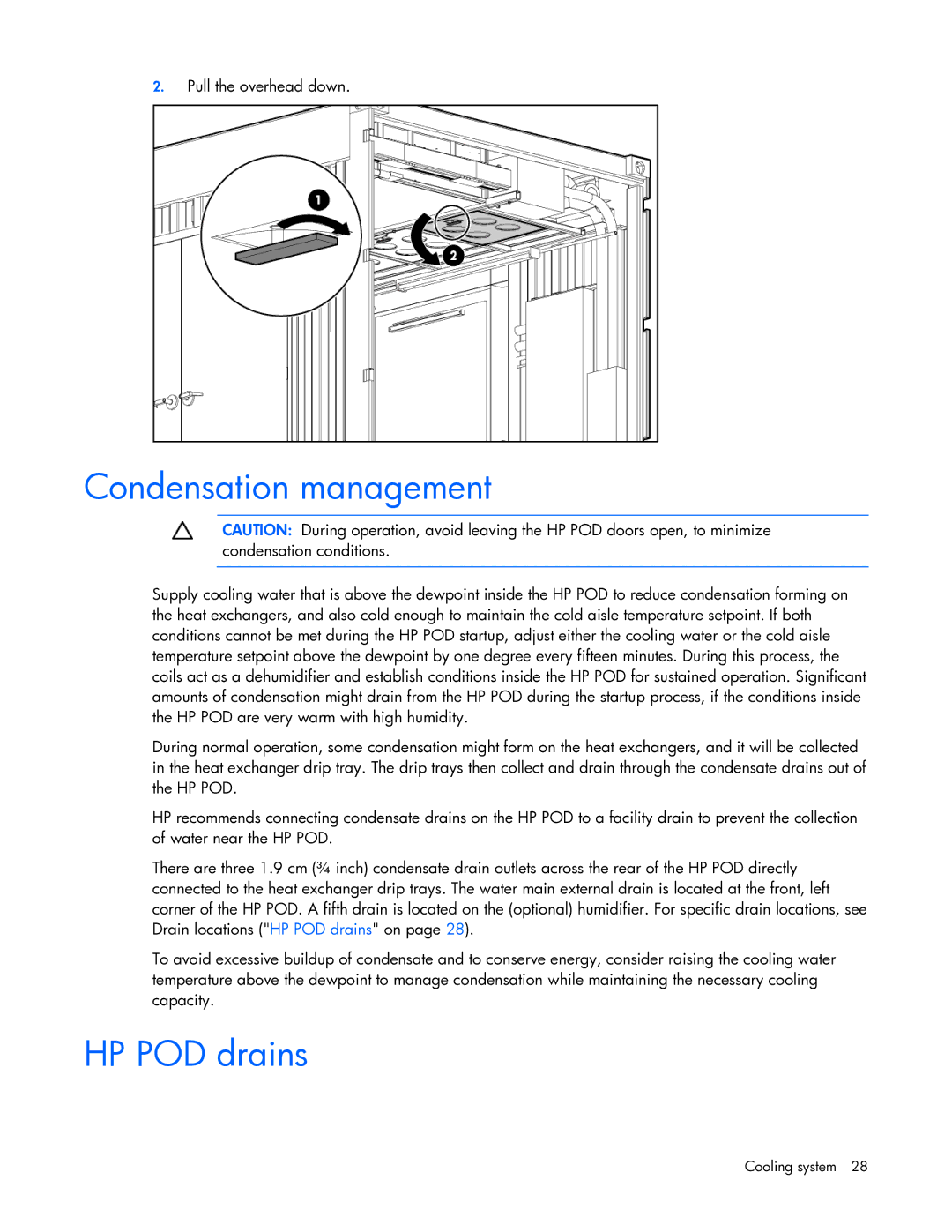
2.Pull the overhead down.
Condensation management
CAUTION: During operation, avoid leaving the HP POD doors open, to minimize condensation conditions.
Supply cooling water that is above the dewpoint inside the HP POD to reduce condensation forming on the heat exchangers, and also cold enough to maintain the cold aisle temperature setpoint. If both conditions cannot be met during the HP POD startup, adjust either the cooling water or the cold aisle temperature setpoint above the dewpoint by one degree every fifteen minutes. During this process, the coils act as a dehumidifier and establish conditions inside the HP POD for sustained operation. Significant amounts of condensation might drain from the HP POD during the startup process, if the conditions inside the HP POD are very warm with high humidity.
During normal operation, some condensation might form on the heat exchangers, and it will be collected in the heat exchanger drip tray. The drip trays then collect and drain through the condensate drains out of the HP POD.
HP recommends connecting condensate drains on the HP POD to a facility drain to prevent the collection of water near the HP POD.
There are three 1.9 cm (¾ inch) condensate drain outlets across the rear of the HP POD directly connected to the heat exchanger drip trays. The water main external drain is located at the front, left corner of the HP POD. A fifth drain is located on the (optional) humidifier. For specific drain locations, see Drain locations ("HP POD drains" on page 28).
To avoid excessive buildup of condensate and to conserve energy, consider raising the cooling water temperature above the dewpoint to manage condensation while maintaining the necessary cooling capacity.
HP POD drains
Cooling system 28
